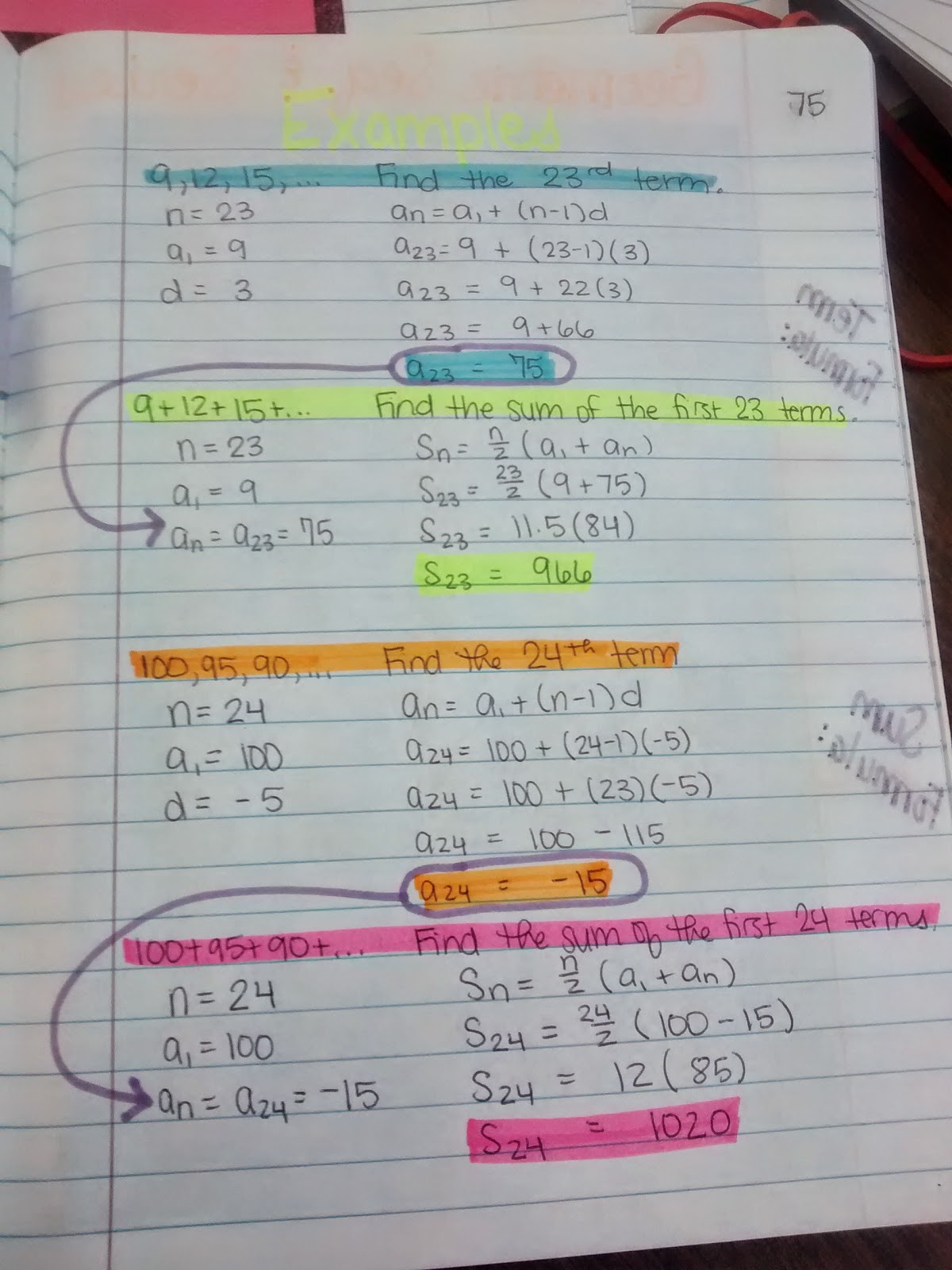
Be ready to build on student thinking and use the debrief to discuss both methods. Both of these strategies lead to the same sum formula, though written slightly differently. This sum of 175 will occur 15 times since there are 15 pairings of days. Another strategy is to realize that the days can be summed in any order and the sum of the first and last day is the same as the sum of the second and second to last day, is the same as the sum of the third and third to last day, and so on. Students use the idea of her average run time to find the sum of all 30 days. This idea of a constant (common) difference is critical to the rest of this lesson and ties in important ideas about a constant rate of change and linear functions. We specifically ask for June 29th so students recognize that her running time on that day is exactly five less than her running time on the 30th. While students may use a recursive pattern to find the first few values in the table, they should quickly recognize the need to make use of structure to find values for days later in June. Students identify that her time increases by five minutes every day and use this to fill in her running log. Today students look at Mallory’s running times during the month of June to explore the idea of arithmetic sequences.
Sequences and series activity series#
Day 7: Infinite Geometric Sequences and Series.Day 6: Geometric Sequences and Finite Series.Day 2: Using Sequences and Series to Describe Patterns.Day 3: Solving Systems with Elimination.Day 2: Solving Systems with Substitution.Day 15: Parametric Equations (With Trig).Day 9: Equations in Polar and Cartesian Form.Day 10: Transformations of Sine and Cosine Graphs.Day 11: Exponential and Logarithmic Modeling.Day 9: Solving Exponential and Logarithmic Equations.Day 3: Compound Interest and an Introduction to "e".Unit 3: Exponential and Logarithmic Functions.the y-values will change increase/decrease with a constant number.

Sequences and series activity software#
Day 10: Connecting Zeros Across Multiple Representations To understand the concept of arithmetic sequence sketch the graph of some linear functions using some graphing software ( I used DESMOS).Unit 2: Polynomial and Rational Functions.Day 3: Rates of Change and Graph Behavior.Day 3: Solving Equations in Multiple Representations.


 0 kommentar(er)
0 kommentar(er)
